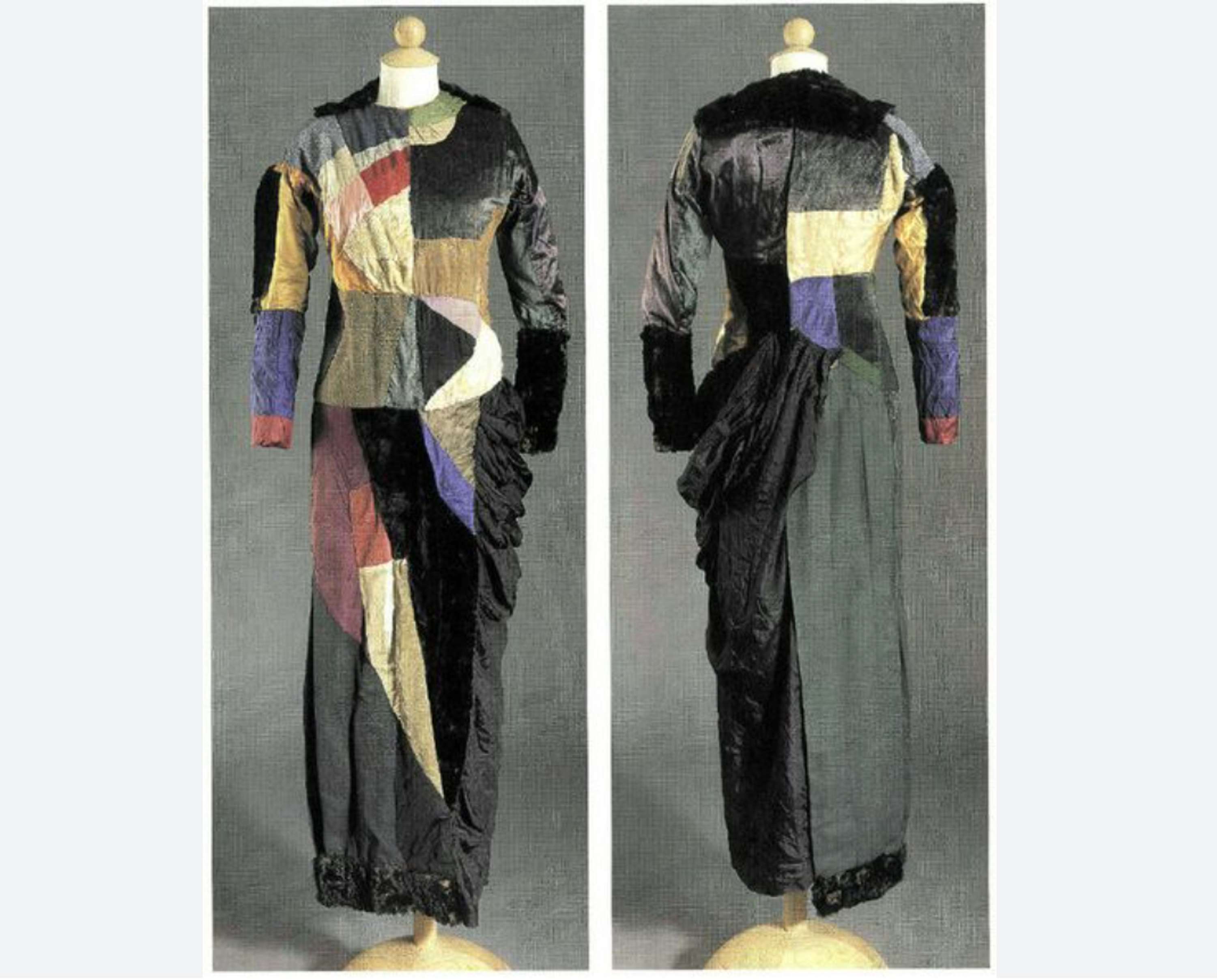The University of Edinburgh – Analytical Project – “Sonia Delaunay’s Simultaneous Dress: Modernity and the New Woman”
- For this project I decided to look solely at one object: Delaunay’s Simultaneous Dress. - I discussed how, as an object, it responded to broader issues of technological and industrial advancement, as well as the phenomenon of the ‘New Woman’ and female liberation.
Introduction
Sonia Delaunay’s Simultaneous Dress, 1913 (Fig. 1) was a significant creation, unfurled from the context of progressive fin-de-siècle beliefs. It was debuted in 1913 on the artists own body as she danced the tango at the Parisian dance hall, Ball Bullier. Her husband Robert Delaunay described the creation as a ‘living canvas’; art activated upon being worn.[1]This was indeed a ‘radical idea’ and communicated how Delaunay, along with other avant-garde artists, believed that existing visual modes of perspective were no longer suitable for the simultaneity of modern society.[2] The phrase Simultaneous was donned by the Delaunay’s to described their style of Orphist painting which relied on the phenomenon, identified by Michel Chevreul, of bringing contrasting colours together as a way of intensifying each individual colour. Through the dress’s amalgamation of various colours and textures, it encourages the viewer to study it in great detail, and thereby understand how each colour combination and fabric choice holds some form of significance. In many ways her relationship with colour was biographically motivated; for Delaunay colour and memory were inseparable.[3]Additionally, the dress can be viewed as reflecting broader issues of technological and industrial advancement through its deep concern with motion. It can also be seen as a preliminary creation for a massive shift in fashion and fabric design. Blaise Cendrars contended that Futurist fashion was ‘directly influenced’ by the dress.[4] Such fashion permeated the lives of modern women, a character which was a huge form of inspiration for the artist. Undoubtedly, she herself maintained the position as an independent financially secure ‘New Woman’. However, whether or not Delaunay simply circumscribed to the pressure for women to remain within the realms of ‘feminine’ art forms, such as textiles and decorative arts, is debatable. Nevertheless, the dress indeed generated a cultural shock wave, encapsulated in Serverini’s account of how Blaise Cendrar’s 1913 telegram to Milan, which discussed the garment in detail, was later circulated across the globe as a ‘Futurist manifesto’.
[1] Tom Slevin. ‘Sonia Delaunay's Robe Simultanée: Modernity, Fashion, and Transmediality’, Fashion Theory 17, no. 1 (2013): 50.
[2] Ann Albritton. ‘“She Has a Body on Her Dress”: Sonia Delaunay-Terk's First Simultaneous Dress, 1913,’ Dress 32, no.1 (2005): 3.
[3] Slevin, ‘Sonia Delaunay's Robe Simultanée,’ 37.
[4] Ibid, 28.

